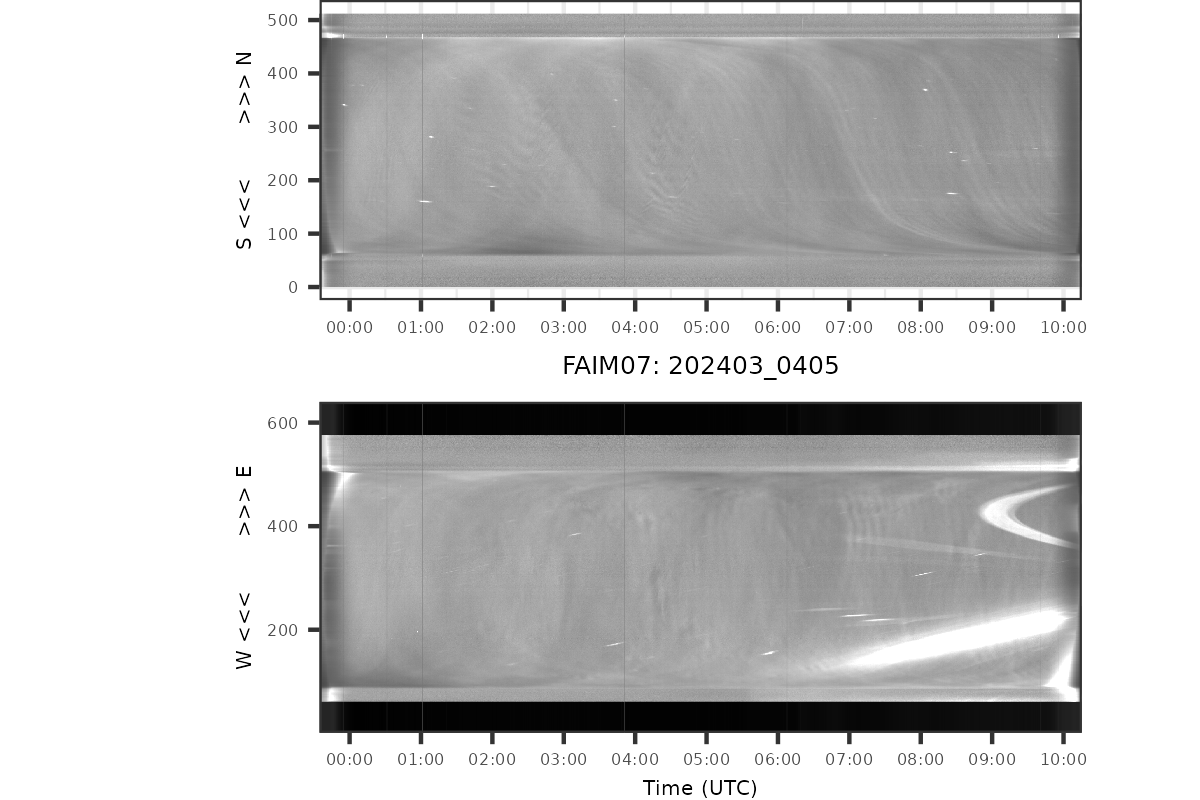What is GRIPS?
GRIPS (Ground-based Infrared P-branch Spectrometer) is a grating spectrometer used to derive rotational temperatures from the OH(3-1) transition. The original design dates back to GRIPS 1 – an Ebert-Fastie spectrometer equipped with a liquid-nitrogen cooled Ge-photodiode, scanning the spectrum between 1520nm and 1545nm once every 5 minutes. It was developed by the university of Wuppertal in 1980; later instruments use a Czerny-Turner spectrograph. In 2008 a redesign by the German Remote Sensing Data Center (DFD) of the German Aerospace Center (DLR) led to the first instrument equipped with a 512-element InGaAs-photodiode array, which is thermoelectrically cooled. Beginning with GRIPS 5 these instruments have a temporal resolution of 15 seconds and cover the wavelength range from 1500nm to 1600nm. More details of these instrument are discussed by Schmidt et al. (2013), DOI: https://doi.org/10.1016/j.jastp.2013.05.001.
What is FAIM?
FAIM (Fast Airglow Imagers) is a special type of imager system for atmospheric observations operated by the German Aerospace Center (DLR). The imagers observe OH airglow (a chemiluminescent layer in about 86km altitude) in the short-wave infrared range (especially the OH-airglow bands (3-1) and (4-2)). Observations are performed with a high temporal resolution ranging between two images per second to one image every three seconds. The field-of-views of the different FAIM instruments range from very narrow with about 9x7° (17m resolution at OH airglow layer altitude) to "all-sky" with about 180° field-of-view to observe the whole night sky from horizon to horizon. For more information see Hannawald et al. (2016), DOI: https://doi.org/10.5194/amt-9-1461-2016, Sedlak et al. (2016), DOI: https://doi.org/10.5194/amt-9-5955-2016
What are keograms?
Keograms are two-dimensional timeseries of sky observations (the name comes originally from auroral observations). A series of images can be seen as an image cube with axes x, y and time. Making cross sections along the x-time- and y-time-axis gives a "row-keogram" and a "column-keogram". If the images are oriented to North beforehand the keograms can be seen as longitudinal and latitudinal keograms. Keograms have the advantage to get an overview about all structures that cross the selected row or column within the course of the night. Clouds moving through the field-of-view hiding the view to the OH airglow layer can equally easy be recognized in an instant as waves or stars. This makes keograms a perfect tool to get a good impression about the phenomena present in a series of OH airglow images.
OTL (Otlica Observatory), Slovenia
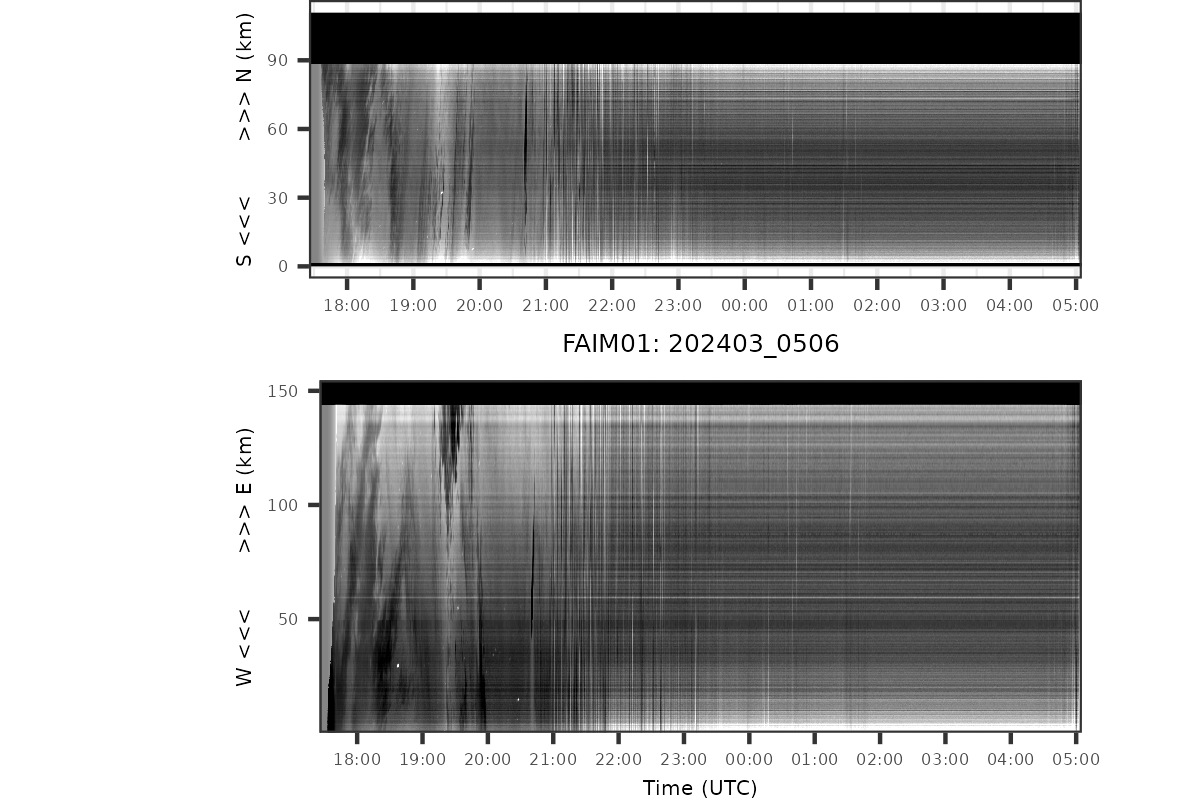
PAN (Panska Ves), Czech Republic
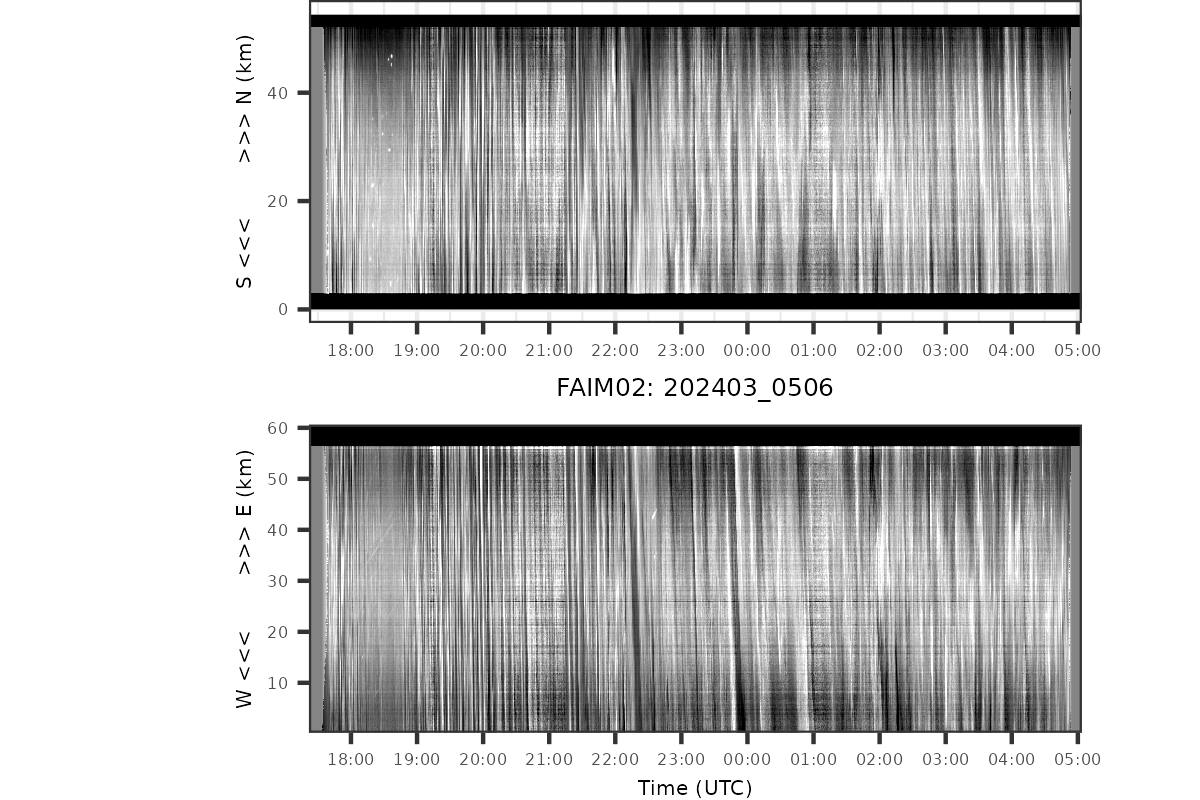
OPN (DLR Oberpfaffenhofen), Germany
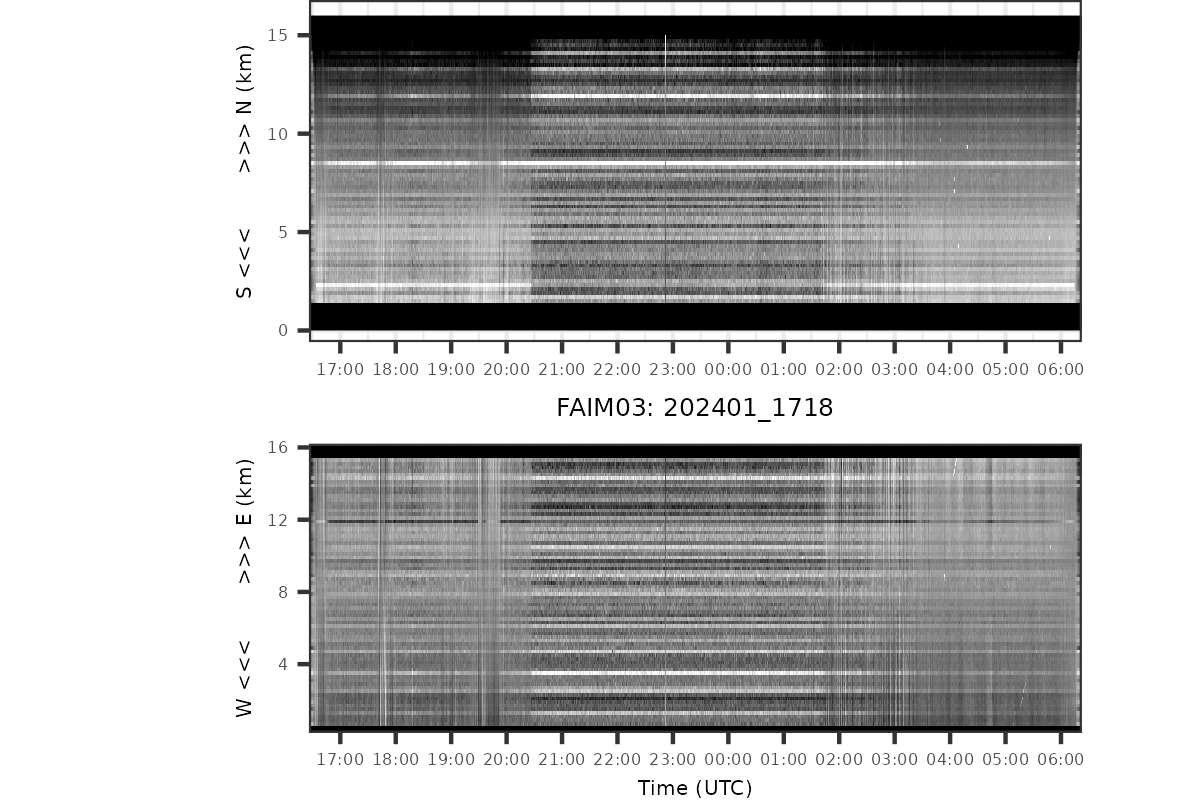
PAR (Paranal Observatory), Chile
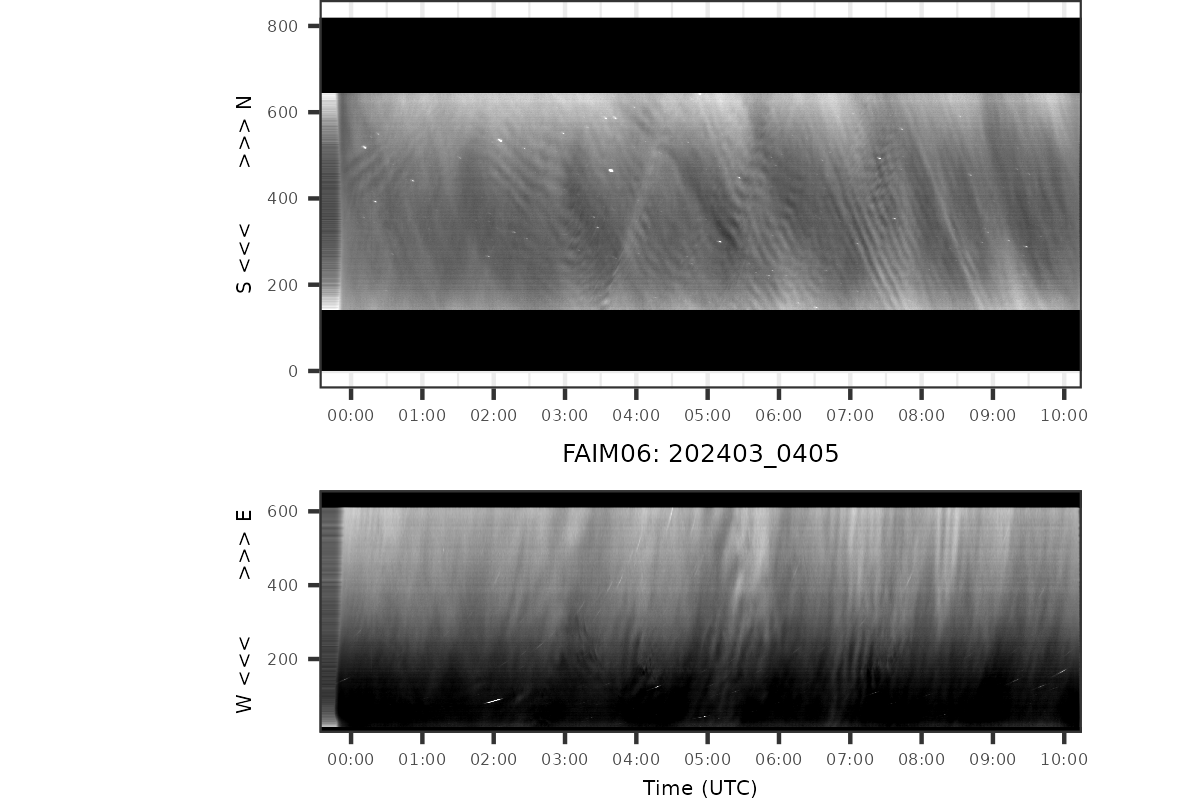
PAR (Paranal Observatory), Chile
